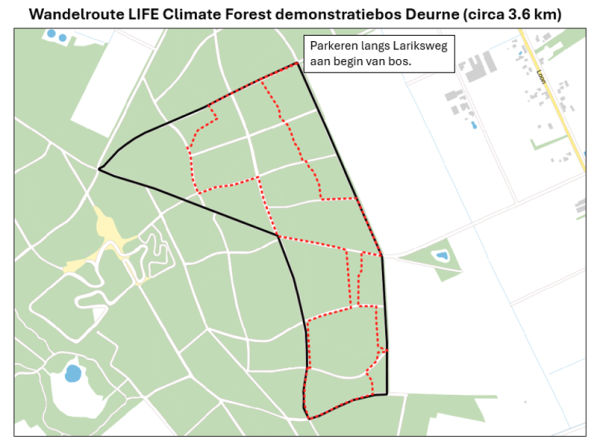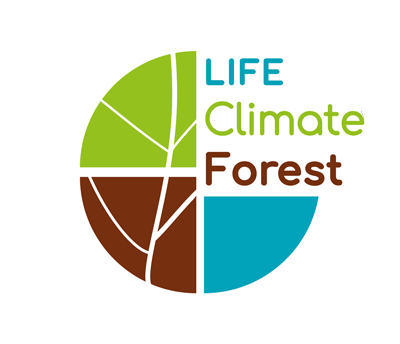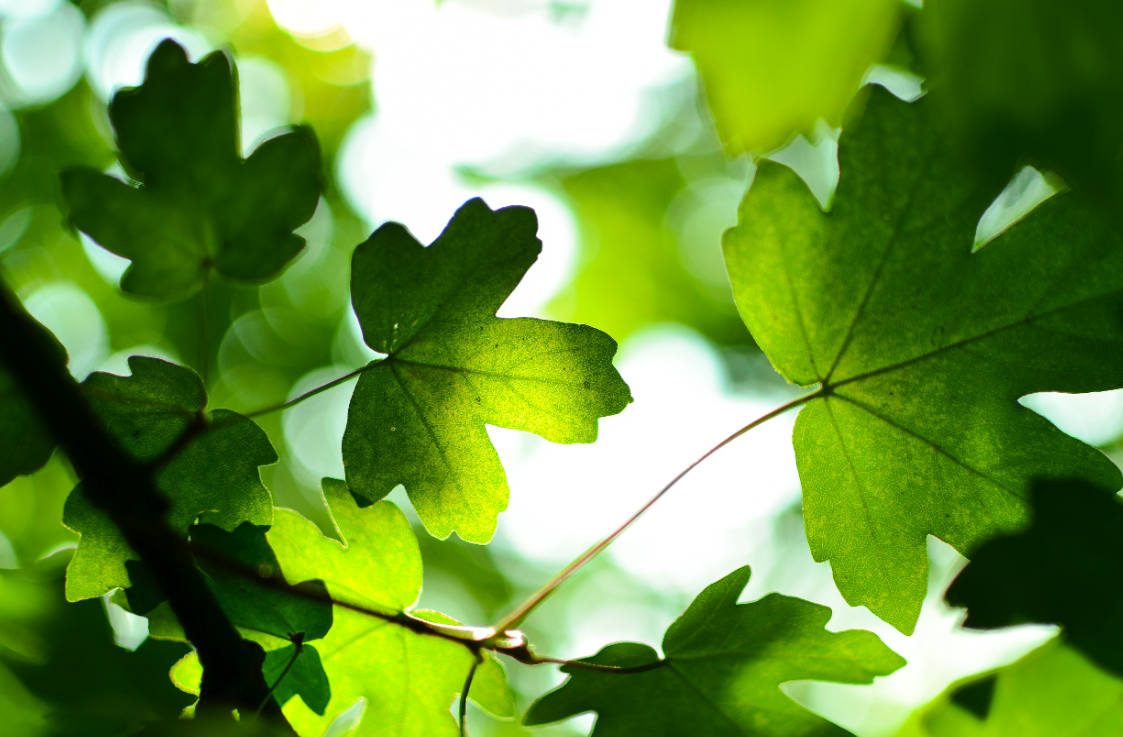Liesselse bossen
In this demonstration forest, it is easy to see what tree-oriented forest management entails and how it can be implemented.
- Owner: Municipality of Deurne
- Administrator: Bosgroep Zuid Nederland
- Location: Municipality of Deurne (Noord-Brabant)
- Size: 272 ha
- Soil: Hairy and field soils
Visiting this demonstration forest?
The Liesselse bossen are freely accessible to visitors. If you park halfway along Larchweg, you can view the various (results of) measures from there. Below is a map with the walking route.
Do you have any questions about managing or visiting this demonstration forest? If so, please contact Evanne Slagter at e.slagter@bosgroepen.nl

Liesselse bossen
De Liesselse bossen consists of first- and second-generation pine forest on drifting dunes and cover sandy slopes. In this area, a 30-hectare demonstration forest will be set up in which tree-oriented forest management will be carried out. Here, we focus on the quality and vitality of individual trees and intervene locally. We focus on mixing species and ages and we want to ensure that wood production, recreation and biodiversity have a joint place within the forest system.


Experience tree

QD tree

Future tree

Habitat tree
Thinning paths
As you can see from the image to the right, the forest area is well-connected to heavy traffic and all forest plots are well-connected with thinning paths. These thinning paths are located every 20 metres, centre-to-centre and parallel to each other. Due to the relief in the area, care of the thinning paths is a concern so that unnecessary soil compaction does not occur. When constructing the thinning paths, existing ditches/lowlands have been taken into account.
OAD network
Old trees and forest parts are very important for the flora and fauna in de Liesselse bossen. A very large diversity of species is associated with old, decaying and dead trees. Think in particular of fungi, bacteria, insects and birds. Some thick old trees are present in de Liesselse bossen. To preserve these, they have been designated as habitat trees. These trees may not be felled and will remain until they weaken, die and fall down due to natural causes. Besides habitat trees, part of the project area has been designated as refugia. In the refugia, besides measures for safety, no other management interventions will be done. There, the forest is allowed to develop naturally. It thus becomes a resting area for present fauna such as badgers, birds and deer. The refugia, habitat tree groups and solitary habitat trees together form the OAD network. This network is shown on the map below.
Bostracking
During forest tracing, we identified amenity trees, QD trees, future trees and habitat trees (see the four photos on the right).
Experience trees are prominent trees along roads and paths. By designating these, and thereby ensuring that they are not cut down and/or damaged, recreationalists can enjoy these beautiful trees. These trees are marked at the back with a large white dot. This way, it is not noticeable to the recreationist, but the operator on the harvester can see it.
QD trees are trees with good wood quality and straight trunks. These trees are managed specifically for timber quality. Some of these trees are pruned and some of the trees next to them are removed so that the QD trees can grow upwards freely.
Future trees are chosen for several reasons. The similarity between several future trees is that they will not be cut down and should form the future forest. These are indicated by white dots at breast height around the trunk.
The habitat trees are marked with a white wavy line around the trunk.
Young plantings
Groups of young trees and shrubs will be planted in several places in de Liesselse bossen (winter 2024-2025). Because native oak, Scots pine and Norway spruce are already common and not without risks under climate change, we will plant mainly with more drought- and heat-resistant deciduous tree species. The additional advantage of deciduous species is that they have no evaporation in winter, allowing water to be stored in the soil, and deciduous species are generally less susceptible to natural disturbances. In addition to non-native drought- and heat-resistant species, native rich litter species are also planted. These species can absorb scarce nutrients deep in the soil and return them to the system. This has a positive impact on soil development, soil acidity and thus the flora and fauna present.



